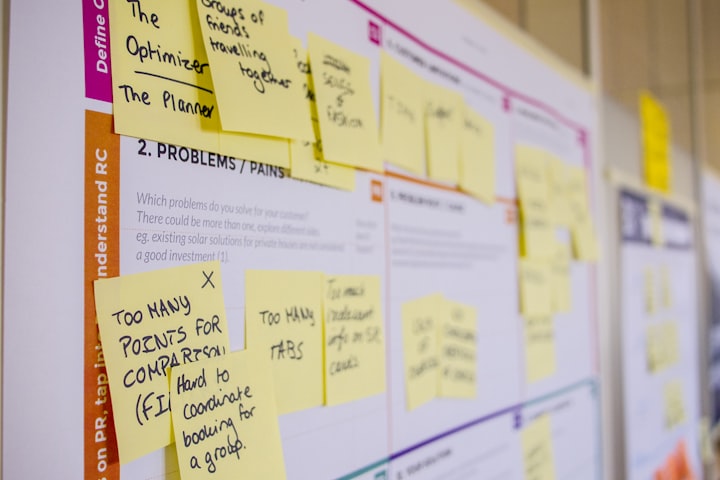Continuous Product management is a core part of your business growth
The history of the world is the history of product management.

Today we think of product management in contemporary business terms, majorly defined by the role of the Product Manager. No matter what the product is (facemask, mobile phones, apps, home designs or fast cars; progress, technological advancement and uplift of human civilization is almost entirely defined by products.
Building the right product for the right market — finding product-market fit- can be an important element to business growth and scalability.
What can be more interesting than inventing products, which gets all the attention, is the management of products after they’re invented. Products are not built in silos. The continuous management of the product development process, iterations backed by clear management applications increases product dominance and overall impact.
The world is not just about the great stories of inventions and how they have made our lives better or worse, but how those inventions were governed and steered by the management of high performing and highly creative minds changing the course of history with their visionary leadership.
David Kirkaldy’s Testing Musem set international standards in testing materials that everyone benefits from eventually. There were lots of materials at this time but with no systematic way of testing them before they are used to develop products.
David Kirkaldy is probably a world superhero you have never heard of. He stopped bridges from falling in a dispensation where efficient bridge designs were nonexistent. Year after year people died from falling bridges until David Kirkaldy stopped this from happening.
He tested materials used in ships and high-pressure vessels and all kinds of metal.
Finally, he left his job to develop a patented machine of his own design — the Universal Testing Machine.

The machine is massive — 14.5 metres long, 116 tons, capable of testing columns and girders from buildings and bridges. It can pull, thrust, bend, twist, shear, punch and bulge iron beams to breaking point. And critically, it records just how much hydraulic pressure each takes before the point of failure.
The machine was the centrepiece of the world’s first independent commercial testing service. It tested materials for the new Blackfriars Bridge, for steamships from Germany, and for guns from Belgium.
After the Tay Bridge disaster, David Kirkaldy tested iron rods and columns to pinpoint where they had failed so that no engineer needs to make the same mistake again.
Above the door of his Testing and Experimenting Works, he had his motto carved in stone: Facts Not Opinions. Any data geeks here tonight? 99 Southwark Street should be a site of pilgrimage for you.

Today, the fact-checking testing and measurement industry, which David Kirkaldy pioneered a century and a half ago, is an indispensable part of the modern economy.
Product design and management were and are still at the core of international development. How can we attain product management skills to gain a competitive edge in today’s business environment? Just like the story of The Universal testing machine, testing needs to be a crucial part of our product management activities.
What is Product Management?
According to Marty Cagan, the founding partner of Silicon Valley Product Group, “The job of a product manager is to discover a product that is valuable, usable, and feasible”
Product Management is the intersection between business, user experience and technology.
Let me break that down a little bit:
Business — It is by default a business function with the intention to get maximum business value from a product. As a Product Manager, you will be obsessed with optimising a product to achieve the business goals (ideally this must be tied directly to solving the customers’ problems) and maximising return on investment.
Technology — There’s no point defining what to build if you don’t know how it will get built. As a product manager, you must understand the technical details of the product you are building. Understanding the level of effort required to build a product is crucial to making the right decisions.
User Experience — As a Product Manager you are the voice of the user inside the business and must be passionate about the user experience. You need to be out in the field testing the product, talking to users and getting that feedback first-hand
What do Product Managers do?
Product managers drive the vision, strategy, design and execution of their products.
High-level archetypes of these different dimensions.
- Vision — Example: Elon Musk
- Strategy — How are you going to win. Jeff Bezos. He wants to win at low cost. He says your margin is my opportunity. His strategy made him win over Google and Microsoft in an area they should be winning
- Design- Steve Jobs. ( it takes real hard work to get clean thinking to create designs that are really simple).
- Execution — Ivan Zhao | Founder, Notion + Stewart Butterfield | CEO, Slack
About the Creator
Edison Ade
I Write about Startup Growth. Helping visionary founders scale with proven systems & strategies. Author of books on hypergrowth, AI + the future.
I do a lot of Spoken Word/Poetry, Love Reviewing Movies.






Comments
There are no comments for this story
Be the first to respond and start the conversation.